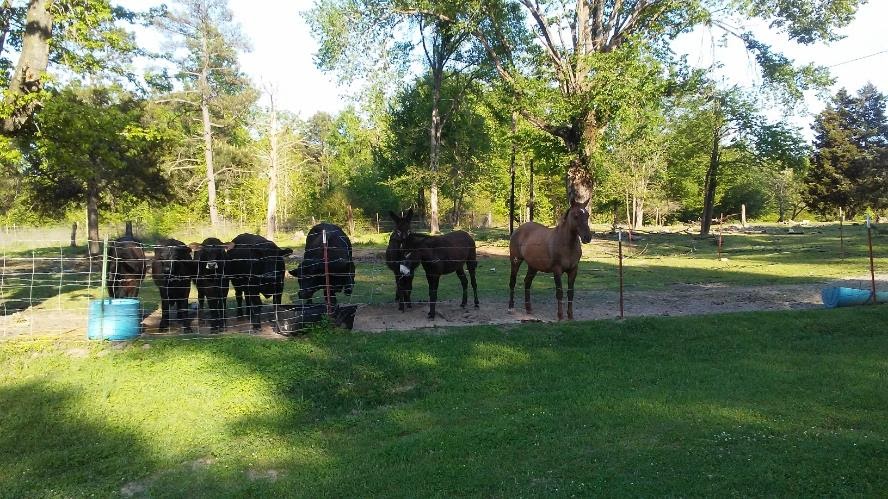Faith Ellis is only farming six of the 85 acres on her New Boston, Texas farm – one of eight Black-owned operations left in Bowie County – because of the coronavirus pandemic.
Ellis, a disabled farmer, and her husband can’t afford workers to cross-fence, prepare soil, plant and harvest. She needed money from the Coronavirus Food Assistance Program, a U.S. Department of Agriculture fund launched on April 17 as part of the $2 trillion CARES Act.
But, Ellis said, after submitting her application, her local Farm Service Agency said she needed to complete a conservation plan, replant trees and register an updated component to her business plan, noting her husband’s veteran status.
Ellis estimates it’ll be six months to a year before she finishes her tasks.
A white farmer nearby did not have to complete these additional requirements to receive relief funds, Ellis asserted. When asked about this discrepancy, the USDA said it is committed to providing access to capital and programs to all farmers, including minorities.
“Our staff across the country are working closely with producers to ensure they understand the application process and have all the materials they need to get assistance,” a spokeswoman said via email.
Ellis remains skeptical. “I have complete confidence that we will do everything right and they will still deny us,” she said. “We watched white farmers and ranchers around us get loads of money while we’re unable to access anything.”
So far, the USDA has disbursed $9 billion to farmers and ranchers seeking financial assistance; the agency said it does not gather data on the race of those receiving aid.
Texas, the state with the most Black farmers in the country according to the latest census of agriculture, received 5.8% of coronavirus relief payments. Iowa, the state with the highest percentage of white farmers, received the most at 10.1%.
Under the payment formula, nearly $4 billion – 44% – went to livestock producers. Dairy and corn followed as commodities with the highest payouts.
Forty miles away from Ellis is Byron Haskins, the only Black farmer in Cass County approved through CFAP. He received $237 – enough, he said, for two bags of cattle and goat feed.
Haskins had hoped for a larger reward, enough to help get B&M Farm out of the red, but he’s used to government-sponsored farmer assistance programs disappointing him.
In 2015, after his front-end loader tractor went down, Haskins manually rolled hay for his livestock. As a result, the 45-year-old needed hernia surgery, sidelining him for six weeks.
Haskins applied for microloans and equipment loans. His local FSA lost his paperwork, he said. He applied again, twice, and both times the agency lost his applications.
“If I hadn’t been persistent and kept an agenda of when I needed to follow up, I wouldn’t have even known they lost my paperwork,” Haskins said. “I never received notice or any denial of my application.”
A spokeswoman for USDA declined to comment on Haskins’ allegations. Instead, she said that producers struggling with their application processes have a variety of options for receiving assistance, one being a call center.
Haskins gave up earlier in the year. “I’m done. I’m not trying again. They’re all in cahoots,” he said. “I shouldn’t have to spend my last penny while my white neighbors are bragging to me about how easy it is to get a loan, that [FSA]’s just giving it away. It gets distasteful to know there are all these roadblocks.”
The National Young Farmers Coalition – an advocacy group that aids beginning and struggling farmers – has criticized the inaccessibility of funding programs like CFAP for Black farmers.
“When you’re a farmer of color, you face challenges from the USDA and systematic racism. There are a lot of barriers in place, but we really need a next generation of farmers,” Sanaz Arjomand, the coalition’s director of federal policy, said. “We have concerns about equitable access to the resources out there. There’s a fair amount of [relief] money left over and we want to make it easier for farmers to actually obtain it and keep their businesses going.”
Many of the coalition’s members didn’t apply to CFAP because the funding isn’t designed to help operations with diversified vegetable crops, according to Arjomand.
The funding utilizes a profit-loss and commodity-to-commodity model in which producers who suffered at least a 5% price decline are reimbursed a percentage of the commodities lost based on the acres they own. Additionally, producers have to record each commodity for which they request relief, choosing from categories of dairy, non-specialty crops and wool, livestock, value loss and specialty crops.
Like Ellis and Haskins, many of the coalition’s members rely on face-to-face sales. CFAP doesn’t factor in relief for this type of market loss, according to Arjomand.
About 48% of Black-owned operations specialize in cattle and dairy production, but the remainder are small vegetable farms, which benefit less from CFAP.
Jeremy Peaches, the 28-year-old founder of urban farm Fresh Life Organics in Houston and in nearby Sharon County, expressed concerns about the USDA’s historic discriminatory practices against small Black farmers.
Between 1910 and 1997, Black farmers lost 90% of their land; white farmers lost 2%.
Eighty-six percent of all microloans issued between 2013 and 2015 went to white farmers. In 2015, according to documents obtained by The Counter, Black farmers received $11 million in microloans, less than 0.2% of the $5.7 billion disbursed by the USDA.
“America was built off the family farm. We’re back to square one, when they brought [slaves] here,” Peaches said. “You have people sitting around that need jobs and there’s all this land and money. [Black farmers] can do the agricultural job you brought us here to do, but we’re not going to work for you for free. You pay us and we all can work together.”



